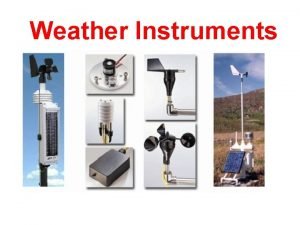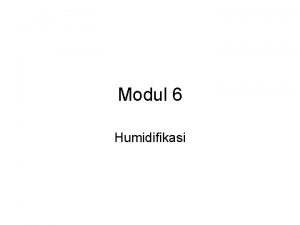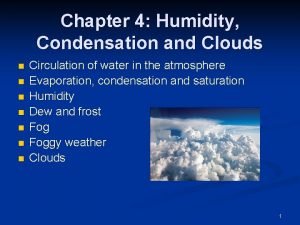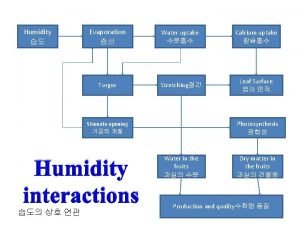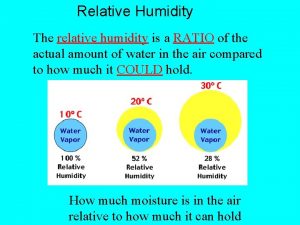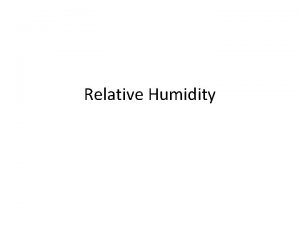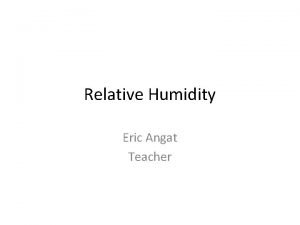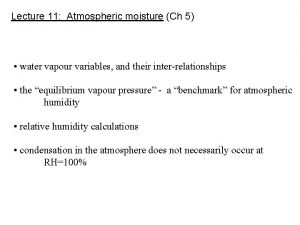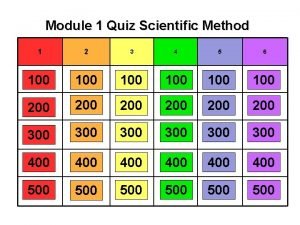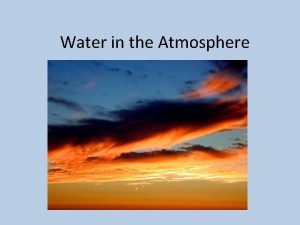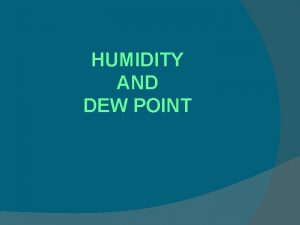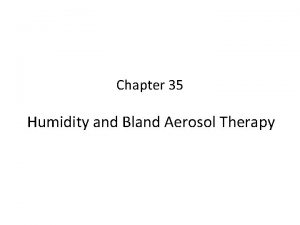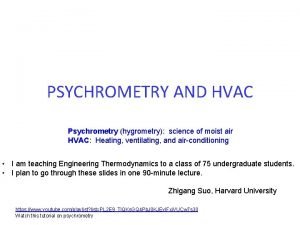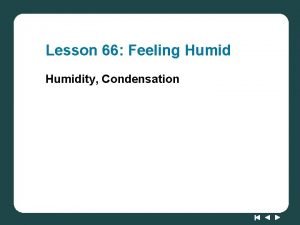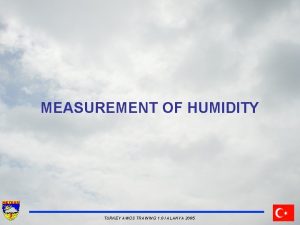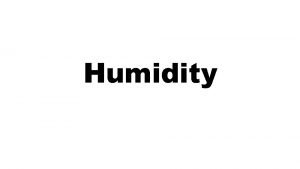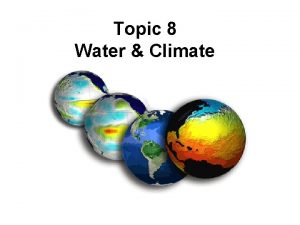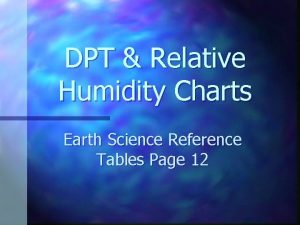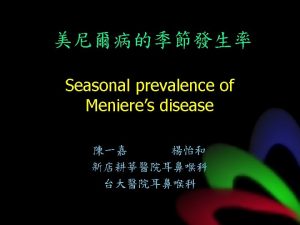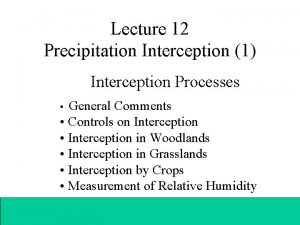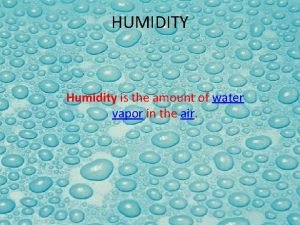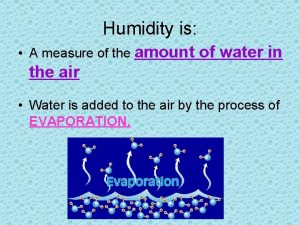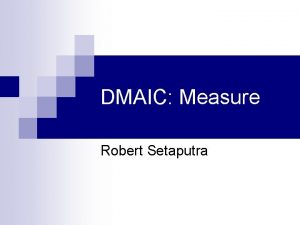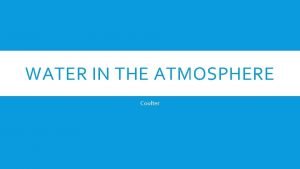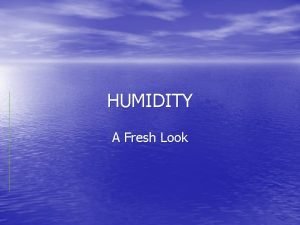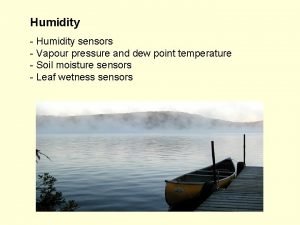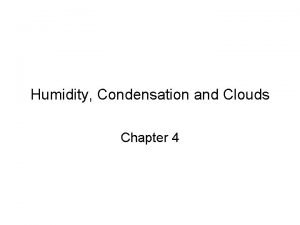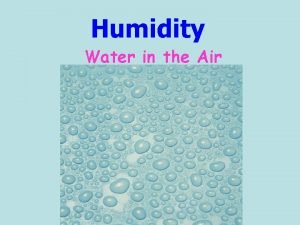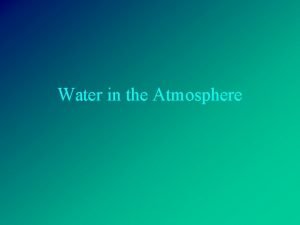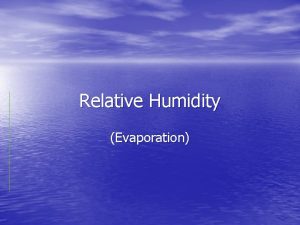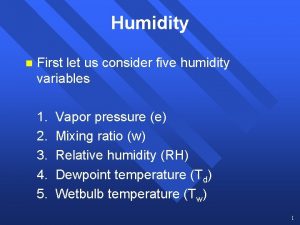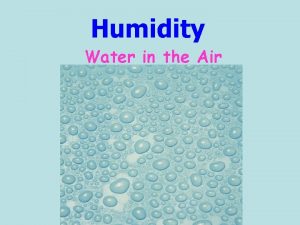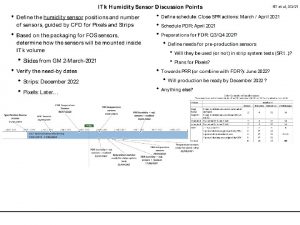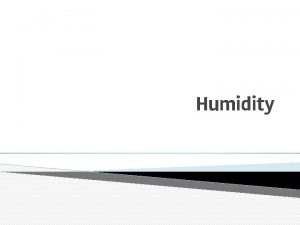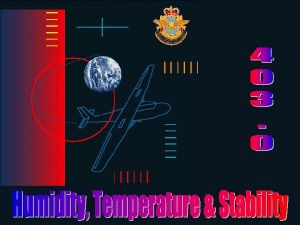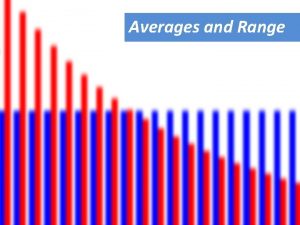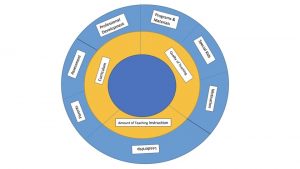Humidity Humidity is A measure of the amount


























- Slides: 26

Humidity

Humidity is: • A measure of the amount of water in the air • Water is added to the air by the process of EVAPORATION.

Factors that Affect Relative Humidity 1. Amount of water: If you increase the amount of water in the air (by adding it due to evaporation), Relative humidity will go up. 2. Temperature: Since warm air can hold more water than cold air, if you lower the temperature the Relative Humidity will go up, even if you don’t add more water.

What temperature can hold more water vapor?

Water capacity of air at different temperatures

Saturation • If the air is SATURATED, it is holding ALL of the water that it can hold. – WARM air expands and can hold more water vapor than COLD air, so it takes more water to saturate warm air.

Relative Humidity • RELATIVE HUMIDITY is the amount of water in the air compared to the amount of water the air could possibly hold. • Humidity values are usually given as Relative Humidity %.

Examples: If the air is holding half the water it could hold, it’s Relative Humidity is 50%. If the air is holding all the water it can hold it is saturated and the relative humidity is 100% If the air is holding no water, relative humidity is 0% If it is holding a quarter of the water it could hold, relative humidity is 25%

• If the air is saturated, its Relative Humidity is 100%, and if the temperature drops PRECIPITATION will occur.

Measuring Humidity • Relative Humidity is measured using a PSYCHROMETER. – A psychrometer is made of two thermometers. One is covered with a wet cloth. When air moves over the wet cloth, evaporation occurs and lowers the temperature on that thermometer. If you compare the temperature on the two thermometers you can get the relative humidity.


Ex. 1 Dry Bulb = 14 degrees C Wet Bulb = 10 degrees C Difference is 14 -10 = 4 1 st – look at dry bulb reading (14) 2 nd – find difference (4) 3 rd – RH is where they meet = 60%

Dry Bulb= 4 degrees Wet Bulb= 3 degrees Difference is 4 -3 = 1 RH = 85 %

Ex. 3 Dry Bulb = 6 degrees C Wet Bulb = 6 degrees C Difference is 6 -6 = 0 RH = 100%

Condensation • Condensation is the process by which a gas, such as water vapor, becomes a liquid. • Condensation will occur when the air is SATURATED, or has a relative humidity of 100%. The air can’t hold any more water vapor, so the water condensed out of the air. This commonly happens when moist air is cooled, or comes in contact with a cool surface.

Dew Point • DEW POINT is the temperature at which condensation will occur. The Dew point is the temperature the air must be in order to be saturated. The ice makes the air near the glass cooler and it reaches its’ dew point, cool air can’t hold as much moisture and condensation occurs

• Remember, cooling the air makes it unable to hold as much water vapor, so water will condense out at a certain temperature. • The Dew Point will tell you how comfortable you will be. If the Dew Point is above 600 it will feel humid. If the Dew Point is below 600 it will feel dry.

Cloud Formation • Clouds form when water vapor condenses on CONDENSATION NUCLEI- solid particles in the air that water can condense on. Examples: Smoke particles, ash, dust, pollen, pollutants


Cirrus • Indicate fair weather • High altitude, made of ice crystals • Look like feathers or veils

Cumulus Clouds • Indicate fair weather or approaching storms if they accumulate • Form at all altitudes • To “heap upon” like piles of cotton balls.

Stratus Clouds • Indicates fair weather if high or rain and snow if low • All altitude clouds • Fog is a stratus cloud • Strata= “to layer”

Cumulonimbus Clouds • Indicate Storms • NIMBUS means “rain” • Usually dark

Stages of a Cumulonimbus Cloud


 A measure of the amount of solute dissolved in a solvent
A measure of the amount of solute dissolved in a solvent Is measure for measure a comedy
Is measure for measure a comedy What weather instrument measures air temperature
What weather instrument measures air temperature Contoh soal psychrometric chart
Contoh soal psychrometric chart Thunder is the sound of brainpop
Thunder is the sound of brainpop Relativ humidity
Relativ humidity Identify three effects of low humidity s190
Identify three effects of low humidity s190 Station model
Station model Humidity evaporation
Humidity evaporation Relative humidity
Relative humidity What is humidity
What is humidity Dew point chart
Dew point chart Water vapour formula
Water vapour formula Three redwood trees are kept at different humidity levels
Three redwood trees are kept at different humidity levels Relative humidity chart
Relative humidity chart High humidity meaning
High humidity meaning Which phrase best describes the term environment?
Which phrase best describes the term environment? Bland aerosol therapy
Bland aerosol therapy Absolute humidity
Absolute humidity What is humidity
What is humidity Humidity recorder turkey
Humidity recorder turkey Humidity
Humidity Topic 8 water and climate
Topic 8 water and climate Earth science reference table relative humidity
Earth science reference table relative humidity Humidity server room
Humidity server room Humidity and meniere's disease
Humidity and meniere's disease Calculate relative humidity
Calculate relative humidity


